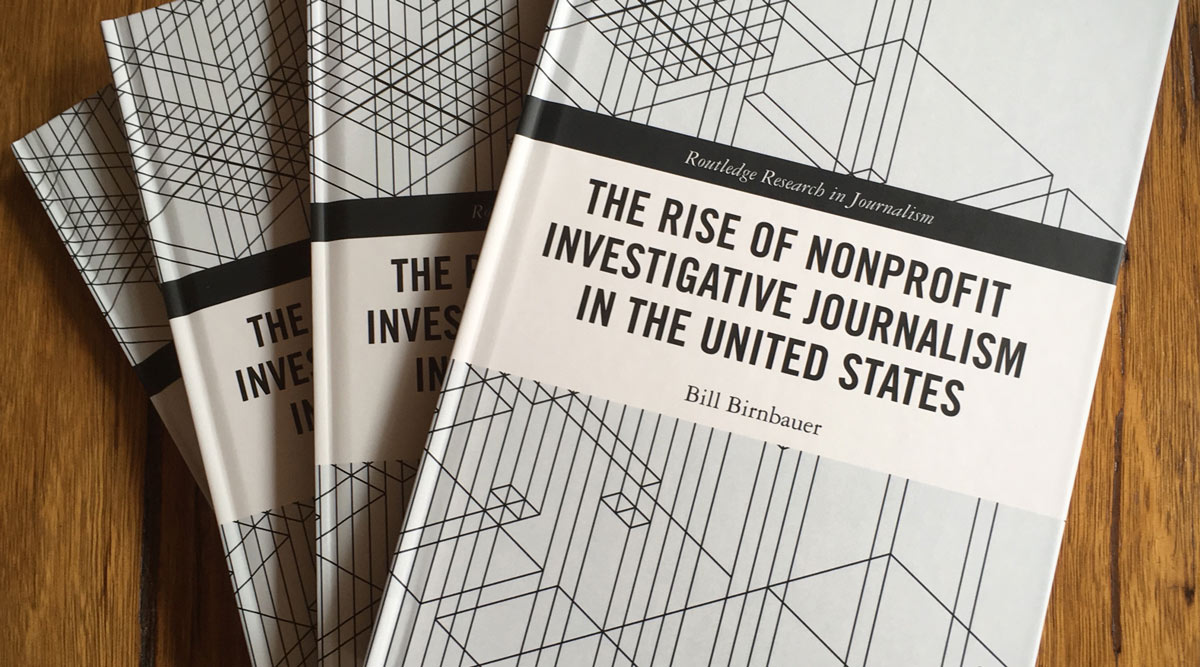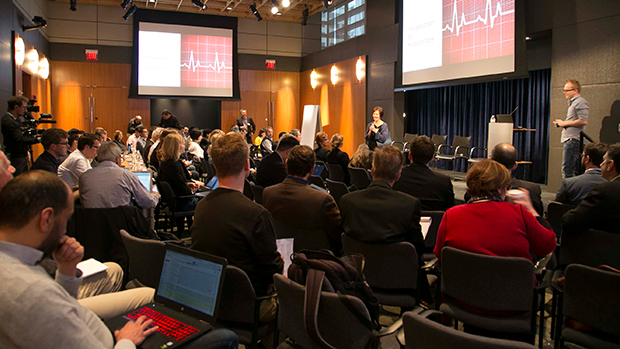Bill Birnbauer is a long-time ICIJ member with more than 30 years’ experience in journalism, including on two ICIJ projects. He is currently an adjunct professor in journalism at Monash University in Melbourne, Australia.
His most recent book, The rise of nonprofit investigative journalism in the United States, published in late 2018, examines the rapid growth, impact and sustainability of nonprofit investigative reporting and its impact on democracy and mainstream journalism.
We asked him about the current state of investigative reporting in the U.S., and what role nonprofit newsrooms play in today’s accountability journalism.
It feels as though 2018 has been a huge year for investigative journalism, particularly in the United States. Do you think there has been a re-investment in or renewed focus on investigative journalism in response to the heated political environment?
We may look back at 2018 as the year that quality journalism made a comeback with readers. After years of celebrity schlock, listicles, and diminishing trust in journalism, there’s a discernible turn to media that are known for verifying their stories, being nonpartisan, independent and holding power to account. That seems to be the vibe from the evidence that more people are willing to pay for original, in-depth journalism rather than roam the internet hoping to find something of value.
Americans who are politically engaged and civic minded are disgusted by the lies, misrepresentations and general shenanigans of the political class, epitomized by U.S. President Donald Trump and his attacks on media companies and journalists. Perverse as it is, President Trump has been great for the revenues of quality media. I’ve always maintained that the small number of media organizations whose brands are associated with investigative journalism such as The New York Times, The Washington Post and a few others actually protected their investigative units during the financial crisis of 2007-2009 while cutting middle editors, photographers and soft news reporters. Now they’re reaping the rewards and newer online outfits are seeing that there are benefits to having an investigative brand.
What role have nonprofit media outlets played in shaping the practice of journalism today, especially when it comes to investigative journalism?
The nonprofit investigative journalism sector is tiny in terms of the number of journalists and budgets when compared with mainstream media. However, there’s a tail-wagging-the-dog story here.
There are more collaborations today between legacy and nonprofit media than ever. Editors have traditionally been wary of publishing stories by external providers. They worried about the possible hidden agendas of the writers, the quality of the journalism, the adherence to journalistic ethics, and potential problems arising in editing and fact checking. While some concerns persist, they have been alleviated by several factors.
One of the key reasons is the shift of senior mainstream editors to the nonprofit field. For example, Robert Rosenthal at the Center for Investigative Reporting (Reveal), Paul Steiger and Stephen Engelberg at ProPublica, Bill Keller at the Marshall Project, Lorie Hearn at inewsource, Andy Hall at the Wisconsin Center for Investigative Journalism, Laura Frank at Rocky Mountain PBS, ICIJ’s Gerard Ryle, and I could go on. The point is these journalists have the same journalistic values and ethics as their former colleagues in the mainstream media. When they ring editors at legacy organizations and say they have a great investigative story to share, those editors listen.
For professional journalists, having time to investigate leads, lodge freedom of information requests, find whistleblowers, and clean and understand data is the greatest resource they can have.
Another change in journalistic practice has been the disintegration of the already crumbling “firewall’’ between editorial and the business side of media companies. In many nonprofits, that so-called “church-state” separation by necessity has disappeared effectively because senior journalists often are involved in pitching to foundations and wealthy donors as well as being involved in editorial.
What have been some of the biggest advantages offered by the nonprofit model for investigative journalism?
Time. Time. Time. For professional journalists, having time to investigate leads, lodge freedom of information requests, find whistleblowers, and clean and understand data is the greatest resource they can have. Nonprofit investigative news sites operate like factories that produce one niche product – investigative journalism. Their journalists generally need not worry about chasing daily news, or being stressed by deadlines.
Obviously under ICIJ’s model, it’s a huge advantage to have a global network of journalists working on the same story. ICIJ was established by Charles Lewis on the basis that great stories do not stop at a nation’s borders – think of organized crime, tax avoidance, environmental issues and corruption. And then having hundreds of journalists working collaboratively, cross-checking, helping one another has taken accountability journalism to new levels.
What are some of the major differences and/or disadvantages that influence the way the nonprofit news sector operates?
Despite the recent growth in individual donations and memberships, the nonprofit sector remains dependent on foundation funding. Over the past 10 years, there’s been a lot of discussion about “earned revenue” – income from story sales, events, teaching, and advertising – as distinct from foundation grants, but a recent survey by the Institute for Nonprofit News found that nonprofit news organizations depended on philanthropic giving by foundations and mainly wealthy individuals for 90 percent of their total income. That’s a key difference from the commercial model that relies on advertising and subscriptions.
The biggest disadvantage is that foundations and wealthy donors may not renew their grants. The nonprofit editors I interviewed for my book had an existential fear that foundations would move to other areas and that the funding could not easily be replaced. For many of the smaller organizations, the constant uncertainty and search for funding robbed them of the time they could be spending on journalism.
How do funders factor into the ethics equation? How does the relationship differ compared to, say, the traditional relationship between an advertiser and a mainstream media outlet?
Advertisers want to sell you toothpaste or a car. It’s obvious. But what do foundations want for their money: that’s not so obvious.
Foundations do want something. They either want media reporting of an issue they fund through other grants or that they care about, or they have democracy or journalism programs. It is not unusual today for foundations to fund the reporting of a single issue such as education, criminal justice or the environment at a news nonprofit. No respectable commercial news outlet would accept an advertiser telling it to cover a particular issue.
That kind of support by foundations, some would argue, distorts editorial decision-making by nonprofit editors. However, without such funding important issues of public interest would go unreported. It needs to be recognized that the nonprofit sector’s business model differs from that of the commercial media.
What may seem questionable at a newspaper – such as advertisers suggesting story topics – may not be so at a nonprofit site because foundations do not have a commercial incentive. Foundation funding of broad topic areas creates more quality journalism that is good for an informed citizenry as long as the funding is transparent and funders do not determine the actual stories or the content of the stories. That is an ethical line that should never be crossed.
In this era of increasing conflict between politicians and the media, how can readers recognize and value quality, civically-important journalism?
I blame journalists for not doing enough to educate the public about why good journalism matters. Like most other journalists, I was fully occupied over my 30 years as a newspaper reporter and editor in getting out the next day’s paper or working on the next story. Educating readers about the difference between verified news and spin or how journalism relates to democratic processes was something I and my colleagues never worried about. Problem is, if journalists don’t do it, who will?
That’s changed a bit now and in the U.S. particularly there is more emphasis on media literacy in school programs. Readers should get out of their filter bubbles and regularly access with a critical eye a variety of conservative, liberal, public, commercial and nonprofit news sources on different media platforms.
Having said that, many readers either have educated themselves or instinctively know the difference between real news and fake news and have turned to experts, much as they would in going to a medical specialist. They are acting on that by paying or donating for the nonpartisan, independent journalism produced by professional commercial, public and nonprofit journalists.



